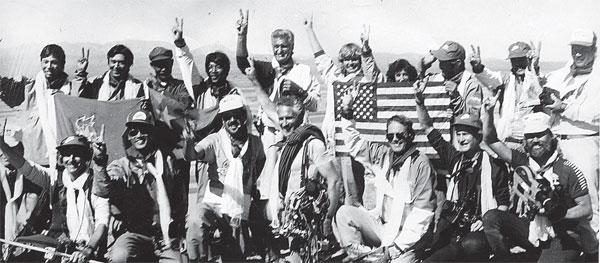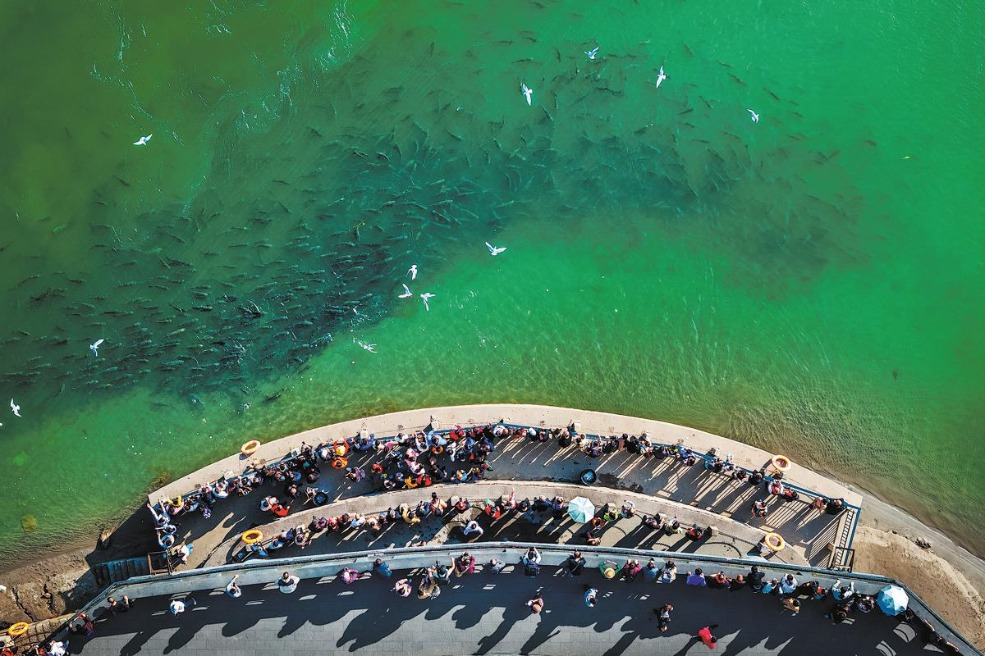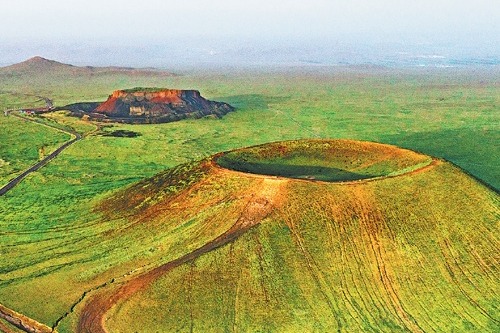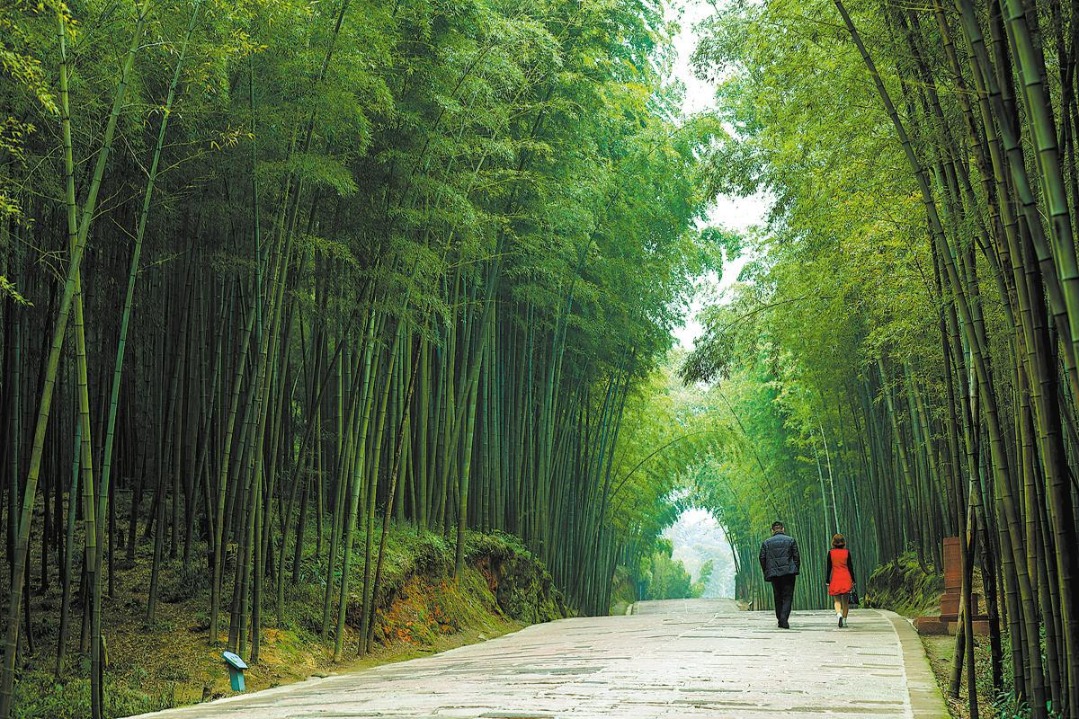A story of deadly torrents and tears

They were united toward a common goal 30 years ago. In trying to achieve it, 11 of their friends, peers and rivals had lost their lives. Now, as they met for a reunion, drinks and tears flowed freely.
"During the party in Beijing all of us drank late into the night, and we laughed and wept," says Chu Siming, 59, a member of the China-US Upper Yangtze River expedition in 1986.
That mission called for a journey of about 2,500 kilometers lasting 10 weeks on rafts and kayaks through virtually uncharted waters. It would entail negotiating swirling torrents, dozens of waterfalls and precipitous drops.
This was no scatterbrained attempt by a group of individuals to set a Guinness record but an effort that had the approval of the top sports authorities in China. Yet two strong undercurrents propelled the expedition from the start: national hubris and money.
| Above: The Sino-US joint team on the upper reaches of the Yangtze in 1986. Below: The group before leaving for the river. Jan Warren / For China Daily |

In 1985, Ken Warren, an adventurer from Oregon in the United States, declared that he and a team would attempt to be first to raft the perilous upper reaches of the Yangtze, China's longest river. The announcement raised public hackles. People questioned why foreigners had been handed the right to conquer a wild ribbon of water that, by dint of history and culture, enjoyed almost mystical national status.
China Sports Service Co, an affiliate of the national sports authority, had signed an $800,000 deal (766,000 euros; 5653,000) with Warren allowing him to raft the upper reaches of the Yangtze and later to develop a commercial rafting operation.
"In the 1980s, China had just opened its economy to the outside world, and many government departments were seeking profitable projects," says Chu, who was an employee at China Sports Service Co, affiliated with the sports authority.
In an apparent attempt to assuage public criticism, it was later announced that several Chinese rafters had been selected to join the US team. That recruitment drive had encountered difficulties of its own. Many of those approached rejected the opportunity, believing the mission to be too dangerous.
Chu was among those who were undeterred.
"I signed up anyway," he says. "I was young and willing to do anything new and exciting."

The company managed to find two other Chinese members for the 11-man joint team. One was a mountaineer from Sichuan; the other was from a sports school in Wuhan, Hubei province. Also with the team would also be photographer, a camera crew and a doctor, as well as a support group - including Warren's wife, Jan - that would travel by road.
News of the joint expedition garnered much interest in both countries, but it soon became clear that the US-China expedition would not be alone in its attempt. In China, many young people started organizing their own expeditions to beat the team to the prize.
The most notable of these was led by Yao Maoshu, 32, a rafting enthusiast from Sichuan province. In June 1985 he started out alone, which some regarded as foolhardy. It was reported that before he set out he told his wife to get an abortion because he feared that he might not return and she would be a widow burdened with a child.
After 1,300 kilometers in the water, Yao drowned when his raft overturned in the river's treacherous Jinshajiang section. Some hailed him as a national hero.
Apparently emboldened by the tale of heroism, many young Chinese men joined in the competition the next year. Like Yao, nine perished in the waters of the Jinshajiang section.
After months of planning, it was decided that the joint team would set off in late July 1986 from the river's source - the Tuotuo River on the Qinghai-Tibet plateau, at an elevation of about 5,000 meters.
The overland trek to the river's source proved to be a stiff challenge for the team. Within a short time one of the team members, David Shippee, a National Geographic photographer, was suffering badly from apparent altitude sickness.
Another team member, Ancil Nance, in his account of the expedition, Yangtze River Expedition, 1986: An Adventure, says another team member urged Shippee to drink and think of his wife.
"It's not worth it," Nance quotes Shippee as saying about the expedition. "Then he slumped in our arms. We carried him to his tent. By midnight he was dead."

Chu says he vividly recalls the power of the river and says that some sections of the Yangtze may never be conquered because of the extreme rapids. One of those sections is Tiger Leaping Gorge, in northwestern Yunnan province.
When the team was about 320 kilometers from there, on Aug 28, 1986, Warren wrote in his diary: "We were mauled by the river, bounced around like the inside of a pinball machine or maybe a washing machine. ... In a dreamlike sequence our boat was crushed by a mountain of water. It felt like we had hit a brick wall at 20 miles an hour (32 km/h)."
Chu says: "Rocks lay hidden under the rapids, and there was turbulence beyond the rocks. The river was totally unpredictable, and you realized that the normal principles of buoyancy did not apply. You could be pulled into a hole by the power of the rapids, and sometimes it was like being in a runaway car with no brakes. It's difficult to put the fear into words."
However, as the team battled with nature, other problems were simmering in Yushu, Qinghai province. Nance said several team members, whom he called dissidents, voiced their disgruntlement about how things were being run. Eventually four Americans quit the expedition.
The rest of the team pressed on for another 650 km, but neither it nor any other team cleared the Jinshajiang section where the river drops more than 3,000 meters, and where the rapids are especially vicious.
Warren said in an entry in his diary that his 10.8-meter-long boat, the most advanced rafting vessel at the time, was tossed around like a toy. Even for a veteran like him, the power of the Yangtze was indescribable, he said.
In summer this year, two reporters, Du Xiuqi and Chen Chuhan, spent four months interviewing members of the Chinese teams and retraced the route from Xining, Qinghai province, to Batang near Chengdu, Sichuan province, where Warren's team ended its adventure.
"I chanced upon a memorial of the expedition in Tiger Leaping Gorge when I traveled there earlier this year," Chen says. "It was a shocking and tragic story, and I realized that young people like me knew nothing about it."
Chu says that instead of comparing the expedition to an adventure gone wrong, people should see it as a test of human resolve.
"I found rafting to be more about what it means to be human than an adventure. In an extremely dangerous and unfamiliar situation, even a little problem can be amplified into a big one."
The problem the joint team faced was not only the difficulty of the route but also shortages of food, he says.
However, after Warren and others finally acknowledged nature as the winner in their intrepid tussle, more battles lay in store when they returned to the US. The Warrens faced at least six lawsuits from some of the American team members, including one for wrongful death.
In June 1990 the couple were vindicated in all the lawsuits, but Jan Warren says they paid more than $180,000 out of pocket for legal fees. Ken Warren died early the next year.
"I simply couldn't handle all the loss," Jan Warren says. "I was angry and I had to spend a lot of effort to heal the mind and support my then-13-year-old son."
At one stage she refused to even talk about the expedition but says she eventually felt compelled to write about it on behalf of her husband, who was posthumously recognized with a lifetime achievement award in Beijing
"I just cried when I saw the trophy. It is beautiful," she says.
That is why she decided to tell the story of the China-US expedition in a book she self-published in the US, 1986 Sino-US Upper Yangtze River Expedition, for which she has sought a publisher for a Chinese version.
Chu was among the attendees at the party in Beijing on Oct 29, along with Jan Warren, Zhang Jiyue (another member of the expedition) and two Chinese reporters who had been attached to the joint team.
There was "lots of laughter, talking and reliving", Jan says. "I spent the day with Chu and we had a wonderful talk about the expedition."
Chu, who is now in the real estate investment and art business, gave up rafting many years ago, but Jan Warren is as keen on it as ever. She holds onto the dream of promoting rafting as a sport in China.
"One of the things I still want to do, even if I am too old, is to organize Chinese tourists to river raft in the US. Lots of Chinese tourists come to the US these days, and we want to show them the excitement, but in a careful way."
Chu reckons that as a result of the ill-fated expedition, young people may have been deterred from the sport. To this day the feat that those intrepid rafters attempted 30 years ago remains unaccomplished.
xuxiaomin@chinadaily.com.cn
(China Daily Africa Weekly 12/30/2016 page1)
Today's Top News
- Beijing floods claim 44 lives, nine missing
- Xi's speech at ecological, environmental protection conference to be published
- Xi's book on governance hailed for insights into 'China miracle'
- European destinations swamped by tourists
- Economy expected to maintain steady pace
- Stable, healthy Sino-US ties benefit all































